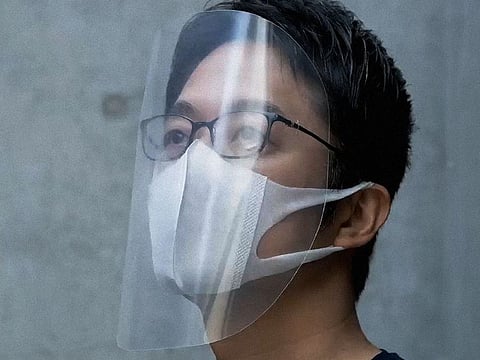5 ways the global design community is fighting COVID-19
From creating masks to making safer spaces, these are the ways design is helping

COVID-19 has drastically changed lives, livelihoods, communities and businesses. However, despite the circumstances, designers around the globe are sharing their resources to thwart this pandemic.
As providers of health care face a drastic shortening of personal protective gear (PPE), and hospitals run out of bed, architects and designers are using their technologies, services and analysis abilities to help the frontline fight the pandemic.
Here are five examples of how design firms and industry professionals have pivoted towards developing and find innovative ways to minimise the impact of COVID- 19 on public health and to limit disruptions to economies and supply chains.
Masks, face shields and PPEs
World’s leading 3D printing manufacturers, design studios and architectural firms rapidly respond to Covid-19 in unison by distributing and providing masks, PPE, face shields and more. In London, the Foster + Partners architecture studio is laser-cutting face shields that can be easily disassembled and sanitised — distribution of their shields to health care professionals has already started in the UK.
A plethora of firms such as Edg, RCH Studios, Bjarke Ingels Group in New York and Howeler + Yoon to name a few are following suit with the surge of this digital fabrication. India based Nuru Karim, founder of the studio Nudes has rallied the country’s 3D-printing community — his campaign #WethePPEople aims to bridge the demand-supply gap in the health care system- with a public-driven initiative for printing masks and face shields from open source software.
Converting spaces
With the surge of cases growing daily, hospitals are faced with shortages in medical equipment and facilities which has gave a new impetus toward converting spaces such as hotels and schools into medical facilities to accommodate the influx. HKS architects have developed a set of conceptual designs for the rapid transition of treatment for patients in hotels, schools and other locations.
Although considering other types of hotels, HKS decided full-service convention hotels could be transformed as easily as possible by using guest rooms as patient quarters, lobbies as reception and registration areas, meeting rooms as central medical supply, restaurant as staff dining, and ballroom as specialised care facilities.
Intensive Care Units
Some planners have opted to create entirely new emergency care structures instead of turning existing buildings into patient care facilities. One alternative of this kind is the CURA (Connected Units for Respiratory Ailments) pods, which is a compact Intensive-Care pod for patients with respiratory infections.
Created by Italian architect, engineer, and director of MIT’s Senseable City Lab Carlo Ratti with fellow Italian architect Italo Rota. The pods are in a 20-foot intermodal container with biocontainment, wherein each unit works autonomously and is mobile. Therefore, pods can be employed in various locations or in proximity to hospitals.
Hands-free door handles
Owing to COVID 19, a Finnish energy firm, Fortum has developed hands free door handles with public reluctance to touch door handles in the public areas. The design and form of the handle is based on recycled material using 3D printing, and allows the door to be opened by an arm rather than a hand. The hand-free door pole was mounted and checked in a local Finnish supermarket last week to prevent door handles from spreading the virus.
Utilising interior design
While many focus their attention and efforts on more prevalent issues pertaining to pandemic, many interior designers have rallied together, to tackle the COVID 19 pandemic by offering insight as to how design of certain places can affect the disease’s transmission.
Such designers have focused on choosing materials that can be easily sterilised and cleaned, materials such as, sheet vinyl floors with rolled edges, laminated countertops and stainless-steel sinks with offset drains. For more vigorous cleaning protocols, for red zone spaces which hold the infectious virus, designers have installed specialised air filtration and pressurisation systems to ensure that harmful agents cannot move from room to room.
— With inputs by Dubai-based writer Jo’el Padayachee.
Sign up for the Daily Briefing
Get the latest news and updates straight to your inbox







